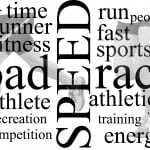Images play a vital role in website design and user engagement. They bring pages to life, support your brand identity, and enhance content readability. But if not properly optimised, they can also drag down your site’s performance and that has a direct impact on visibility of your website in search i.e. a direct impact on your SEO.
Website images are often far larger than necessary and unless you’re a photographer, artist or graphic designer showcasing high-res visuals, the chances are your images don’t need to be as big as they are. That is especially true if most of your website visitors are using mobile devices.
So, why exactly does image optimisation matter and how can you do it effectively? Let’s take a look…
Why unoptimised images hurt your website
It’s tempting to assume that image size doesn’t matter that much, especially now that most users have access to fast internet speeds and modern devices. If your website loads reasonably quickly on your computer, you might think there’s no issue worth wasting time and effort on.
But that assumption overlooks two key factors:
- User experience across devices and connections varies and many users still browse on slower mobile connections.
- Google takes page speed seriously and it’s a confirmed search engine ranking factor in its algorithm, especially for mobile searches. In fact, Google goes so far as to check how your website performs on a slow 3G connection – then judges performance based on those so-called “throttled” metrics.
Images that are too large slow down your site, decrease engagement rates, and ultimately impact your search visibility. So even if your website is well-designed in other ways for a good user experience (UX) and a high conversion rate, that competitor website with better speed performance could pip you to a top-ranking spot. Even small delays in load time can lead to lost traffic and if your site is losing traffic, you won’t ever get to the point where you can showcase your products or services and convert that traffic with your well-planned conversion journey.
It’s not just about file size
While resizing and compressing images is the first and most obvious step, image optimisation involves more than just shrinking files.
A truly optimised image should:
- Be appropriately sized for its use on the page
- Be served in a modern, efficient format (e.g. WebP or AVIF)
- Include meaningful alt text for accessibility reasons and for the SEO benefit
- Be lazy-loaded to improve performance – this means not loading images unless they are initially “above-the-fold” and loading them only when needed i.e. when a web visitor scrolls down a page.
- Be named with descriptive, keyword-relevant filenames
Quick image optimisation checklist
Not optimising images for performance is a basic SEO error so here’s a simple checklist to ensure your website images are working for you, not against you:
A QUICK CHECKLIST
Image Optimisation
- Resize before uploading – Use free tools like TinyPNG, ImageResizer, or your preferred image editor to resize and compress images. Aim for around 1,200px max on the longest side unless needed for full-width banners or you run a creative business showcasing high-resolution images.
- Use the correct format – JPEG for photos, PNG for transparency, WebP or AVIF for performance.
- Add descriptive file names – e.g. black-labrador-puppy.jpg instead of IMG_1234.jpg.
- Write clear alt text – This helps search engines understand the image and improves accessibility for people with visual impairments who use screen-reader software.
- Enable lazy loading – Most modern CMS platforms support this feature natively or via plugins.
- Use responsive images – Let your site serve different image sizes for different screen sizes automatically using the srcset HTML attribute.
How to Optimise Images on WordPress
If you’re using WordPress and you have already uploaded multiple images, then resizing those images is simple. The media library allows you to crop and resize directly, and many themes and plugins (like ShortPixel) handle compression and responsive scaling automatically.
Still, try not to rely solely on plugins because they have their own disadvantages that can impact speed performance. It’s always better to upload images that are already the correct size and format whenever possible.
Always optimise for performance and people
Great web design needs to strike a balance between beauty and performance. Great images are important but they should never come at the expense of speed or usability.
By taking a few simple steps to optimise your images, you’ll improve your site’s SEO, make it faster for users across all devices, and deliver a smoother, more polished online experience.

Established as an SEO specialist since 2009, after a career as a software engineer in the oil industry and investment banking. Michelle draws on her technical experience to develop best-practice processes for implementing successful SEO strategies. Her pro-active approach to SEO enables businesses to reach new audiences, both nationally and internationally. She has a wealth of cross-industry experience from startups to Fortune 500 companies.



